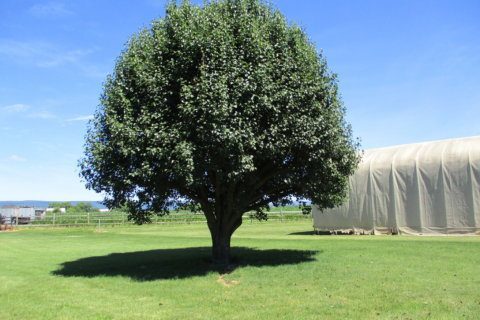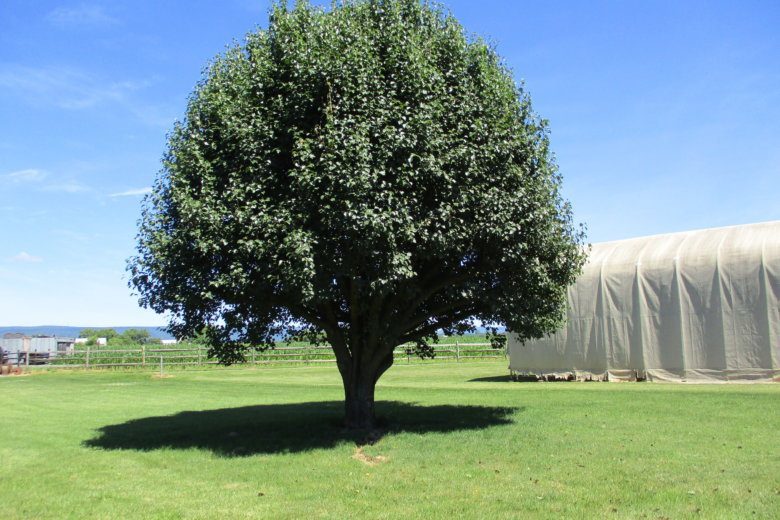
Put da lime in da coconut, But keep it off the plants …
Wendy in Rockville writes “Can I use coir (the kind that’s processed for gardens) to mulch my veggie garden to conserve water and prevent weeds?”
I would not use it, Wendy. Coir — essentially ground up coconut husks — was created to replace milled peat moss, which has been unsustainably harvested in Europe (the peat bogs there are in real distress.)
But our peat moss comes from our neighbor to the north, where they got more bogs than ‘boots’ in their cars. Regardless, peat moss or coir make a pretty useless mulch.
The best mulches are compost — not composted manure — pine straw and pine fines and leaves that were shredded last fall. Do not mulch veggies with any kind of wood or bark; especially those treacherous dyed mulches.
“Struck by lightning; struck by lightning!”
That’s the plaintive plea of Laura in Walkersville, who writes: “I would like to know the best way to help a favorite tree that was struck by lightning,” but the pictures she sent only showed some exposed roots.
When I finally coaxed her into sending a picture of the entire tree, it looked perfect! I asked what her concerns were, and she mentioned the exposed roots, but seemed to be sure the tree was going to keel over with cartoon X’s over its eyes. If lightning had harmed your tree you would have known it right away, Laura; lightning-damaged trees tend to explode.

You can certainly cover the exposed roots with a couple inches of compost, but otherwise relax. That’s a nice looking tree, even after the strike.
Lightning prone trees should be cabled
Laura’s tree survived the shock just fine: the canopy’s intact and the branches are undamaged. Interestingly, the only evidence of the strike was that the roots had become exposed when the grass on top of them was supposedly burned away.

Laura dodged a bullet, but this brings up an important point: tall trees standing alone on high ground in an area with lots of lightning strikes should probably be cabled. It’s a simple task — an arborist puts what’s essentially a lightning rod at the top of the canopy and a metal line is then run down to the ground.
If lightning strikes, it follows the metal and discharges into the earth; where it deposits a large supply of the nitrogen it picked up on the way down, feeding the tree as it protects it — cool!
“It’s garlic time in the city …”
If you planted garlic last fall, now’s the time to get ready for your reward! When one-third of the leaves of your plants have turned brown, slowly pull a sample bulb out of the ground.
- If the head is still small, use it to flavor a dish and wait to harvest the rest. (All parts of the garlic plant are edible at all times.)
- If the heads are big and beginning to split open, harvest it all right away and let it dry indoors.
- If the garlic looks just right, pull a few heads a day.
- Gently brush the dirt off the bulbs but don’t wash them.
- Then spread them out in a cool dry spot indoors to cure; underneath a ceiling fan would be ideal. Do not expose them to direct sun.
- Let them dry for a week, turning the bulbs occasionally.
- Use any damaged bulbs right away, hang the rest in onion bags and be sure to save the biggest heads for replanting in September.
Out with the old, in with the new
It’s turnover time!
- Harvest your garlic before the wrappers start to split.
- Harvest lettuce and spinach before they begin to turn bitter and bolt (salad greens are a crop of Spring and Fall — not summer.)
- Same goes with June peas; harvest what’s left before they burn up in the heat.
- Now you’ve got some space to fill!
- One of the best options is to plant a couple rows of bush beans. You may call them string beans, green beans or snap beans; just be sure to get bush bean seeds and not pole beans. Bush beans produce their tasty pods lower to the ground and need no support; pole beans require a tall trellis — and take longer to produce their tasty pods.
- And plant a late run of small, compact ornamental sunflowers — ‘chust for nice!
Mike McGrath was editor-in-chief of ORGANIC GARDENING magazine from 1990 through 1997. He has been the host of the nationally syndicated public radio show “You Bet Your Garden” since 1998 and WTOP Garden Editor since 1999. Send him your garden or pest control questions at MikeMcG@PTD.net.








